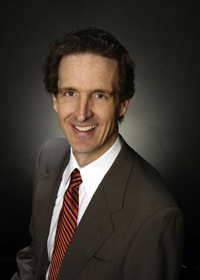Faculty Lecture Series preview: John Morreall
Up until the 20th century, humor got no respect in society. The kid with the musical talent was sent to the music room, the one with a flair for art to the art room, but the kid with a good sense of humor was sent to the principal’s office.
Humor – once viewed negatively and condemned – is actually healthy and has real medical, psychological and social benefits. Scholars, such as Chair and Professor of Religious Studies John Morreall, have explored what humor is and why it’s valuable.
 On
Tuesday, Oct. 2, Morreall continues the William & Mary Faculty Lecture
Series. It’s a discussion with the community on a topic of general interest at
least once a semester. He will present his talk, titled, “What’s So Funny? The
Nature and Value of Humor” at 7 p.m. in the Sadler Center’s Chesapeake Room.
The presentation is free and open to the public.
On
Tuesday, Oct. 2, Morreall continues the William & Mary Faculty Lecture
Series. It’s a discussion with the community on a topic of general interest at
least once a semester. He will present his talk, titled, “What’s So Funny? The
Nature and Value of Humor” at 7 p.m. in the Sadler Center’s Chesapeake Room.
The presentation is free and open to the public.
Morreall says that physically and mentally, humor is the opposite of stress. Laughter lowers blood pressure, increases blood circulation, reduces muscle tension and pain and boosts the immune system.
Humor also creates psychological distance between the stressful situation and the person. This disengagement fosters mental flexibility, blocking negative emotions and allowing us to think our way through problems instead of feeling our way through them.
“That’s why people with a better sense of humor are more creative and are better at coping with change,” said Morreall.
Humor is also useful in improving relationships and communication in our personal lives and in business, he explained. Companies such as Southwest Airlines have put play and humor into their work culture and have seen great results.
“Humor is a social lubricant,” according to Morreall, and it can defuse conflicts, reduce defensiveness and create rapport and good morale.
Morreall, who’s an internationally recognized authority on humor and its benefits, has published five books and over 50 articles on humor. Under the name Humorworks, he’s done over 500 programs for business, medical and professional groups.
Those who attend the lecture are sure to learn a lot – and laugh, too.
 Skip to main content
Skip to main content
